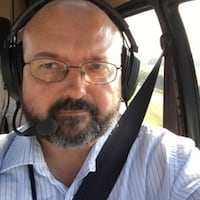The local VA center continues to employ about 2,300 employees at its 450-acre West Third Street campus and about 3,000 employees total at various area locations, Hays said.
“Overall, we have our typical turnover, just like any other organization,” Hays said in an interview Tuesday. “We have about a 5% turnover rate here in Dayton. We have filled every position that has turned over, and we continue to fill positions today.”
The Dayton center has about 200 employment vacancies, he added. “We work with HR (human resources personnel) to recruit for those vacancies, and we continue filling our positions.”
At one point this summer, national VA leaders envisioned cutting more than 80,000 employees through nationwide layoffs before walking back those plans.
Paul Lawrence, deputy VA secretary, said Tuesday the department is no longer in a job-cutting mode.
“We really weren’t shedding employees,” Lawrence said during a visit to Dayton. “We offered retirement to a bunch of folks, then about 30,000 people took it. But you’re right; we are hiring, especially in the areas of doctors, nurses and claims processors, getting people their benefits. (It’s a) full-court press to try to get that done.”
But he added that the department is trying to “streamline some of the things we don’t need and reallocate that money to those hires.”
Between January and June, the VA — the largest civilian agency in the federal government — said it had reduced employment rolls by about 17,000 positions nationally. By July, the department said it was on pace to reduce its number of employees by nearly 30,000 by the end of September, the end of the federal government’s fiscal year.
Lawrence was in Dayton to gauge progress on the Dayton VA’s march toward implementation of new electronic health records.
Hays said he expected the new records not to results in any local job losses. Lawrence hailed the records as a time-saving measure to keep VA physicians up-to-date on patient histories while modernizing how the VA can share information with civilian health care providers.
“It benefits our providers, our doctors, so they spend more time practicing medicine and less time hunting for records and information,” he said.
It was Lawrence’s second visit to the campus. He was here in late July.
About the Author



